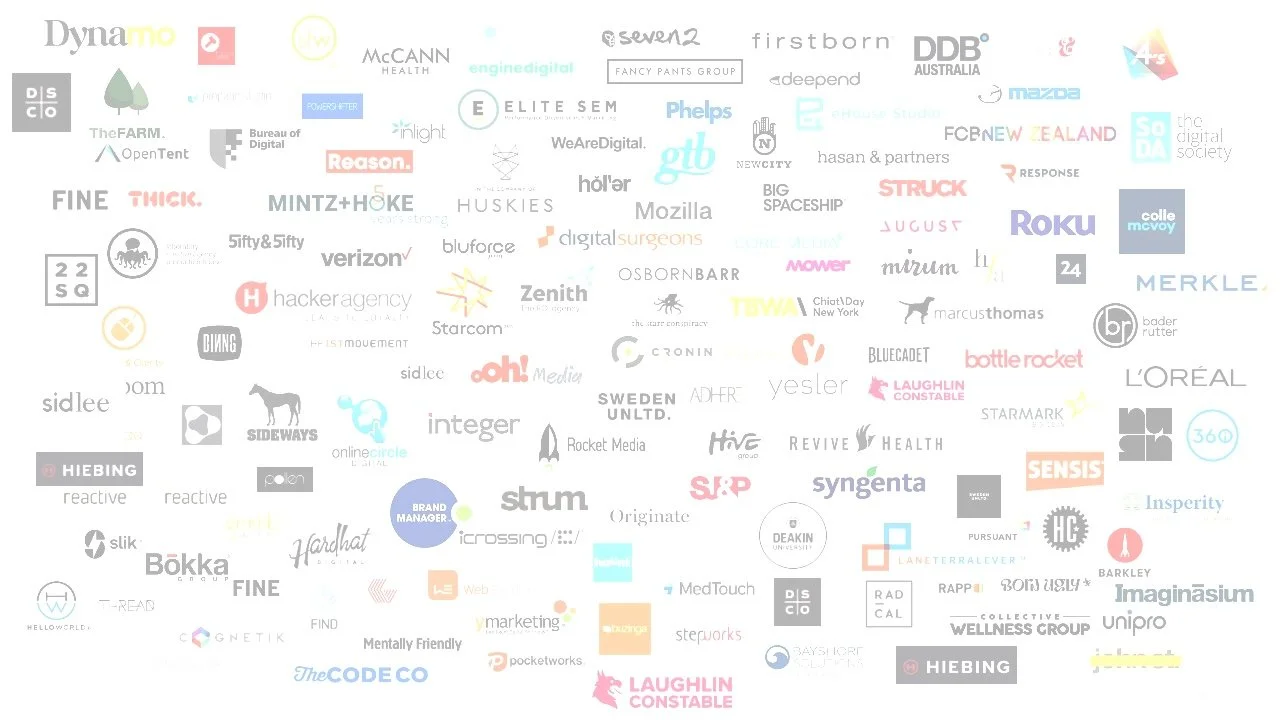
Case Studies
A closer look at our work
Proof of how reducing structural and process drag boosts results dramatically.
Our methods have been battle-tested in project-driven organizations such as agencies, dev shops, and other client-delivery organizations.
And some of our most amazing work has happened in new settings, with new challenges.
Case Studies in reducing the friction in collaboration
1. Fintech “Messy real World” Real Estate Development Company
2. Automotive Marketing Transformed with Pods and AI
Transforming collaboration + client interaction
The challenge: Almost a decade after our massive transformation at WPP’s Global Team Blue (Ford’s AOR, case study here), an agency reached out to us: their Automotive client issued a clear directive: reduce campaign development span time by 25% and lower overall labor cost. This agency’s engagement was a complex one with more than 30 client and agency stakeholders representing a range of internal functions. The agency was also expected to leverage Agile methods and integrate AI into the work.
Our Work: we saw the opportunity in this challenge to guide our clients into optimizing their supply chain relationship, restructuring the way that they thought about working, within the client, the agency, and between them as well. Our work included education, redefining process flows and team structures, and rethinking the strategic use of meetings. In addition, the agency team was piloting several AI tools for use in the relationship.
Results: within months, the first pilot had demonstrated massively reduced lag and faster work iterations and approval cycles, resulting in 40% faster delivery and reduced labor cost.
3. Global Pharmaceutical Communications Workflow
4. Helping Agency leaders transform to a powerful consultative delivery model
Eliminating decision and information latency within traditional business processes: 2X work velocity
The challenge: our client is in the business of professionalizing the process of acquiring, renovating, and selling of real estate properties. they had assembled an amazing collection of best practices and highly trained professionals, and were hitting great numbers. But they wondered… What aren't we seeing, what can we do better?
Our Work: we ran a set of diagnostic workshops, and very quickly narrow it into a few of their fairly complex processes, identifying root causes of rework and delays of various forms we implemented some simple shifts in the way they operate, along with simplification of some of their systems. Included in this was a broader education program for their leadership team to understand how to look at this part of their business.
Results: within just a few months they had slashed the span time by almost 50% netting a recurring six-figure savings on their cost of capital.
Streamlining cross-departmental collaboration, more than doubling (2X) work output and quality.
The challenge: this was the fourth project in a row that our Pharma client brought to us, a frighteningly, slow process of producing documents for patients, caregivers, and medical professionals. Like many processes in business, they did get things done, but not without significant lag in the work, and frequent rework that should never have happened.
Our Work: we used our 10 point productivity diagnostic in conjunction with several process stakeholder meetings to identify a detailed systems model that sought out and highlighted the root causes of the problems they had been facing. This model and the process of problem-socialization (Prochaska) is a common one for us, is the biggest challenge in instituting process change, especially in a situation with multiple departments and multiple layers of stakeholders, is that of aligning people on the drivers and benefits of the need for change. We also establish a set of benchmark metrics before making the change, which allows for process tuning, and of course, measurement of success.
Results: by the end of the first full quarter of using our revised process and spreadsheet based tools, document production had doubled (as measured at the endpoint), span times shrunk, and the amount of rework and revision had dropped dramatically. A survey of all stakeholders revealed that virtually every aspect of the change was viewed positively. Our client was promoted to be head of the operational innovation team as a result of this success.
A journey that was begun to fix the scoping and briefing process led to a far-better way of working with clients and small pods. Success brought an acquirer.
The challenge: Like many of our 100+ agency clients, they were simply looking for a better way to control the scope of their projects with clients.
Our Work: We did our traditional trainings, the Context (Ba) briefing model, and the Collborative Roadmap scoping model, and they landed well, boosting clarity and project success rates. But one of the Co-CEO’s had another idea: what if there was a simply better way of working than the traditional “big” project? Over a several year period, we did additional trainings in management and organizational principles (many of which ended up in the book, UNMANAGED), with each iteration, the agency shifted its ways of working, eventually landing on a small pods (4-6 person) model, where the pods would work closely with client teams to quickly push through stubborn challenges.
The results: Success flowed as their reputation for strong results spread. Their industry focus broadened to include a wide range of industries and challenges. Goodbye agency world, welcome to the land of boutique consultancies. EY snapped them up a few years later.



